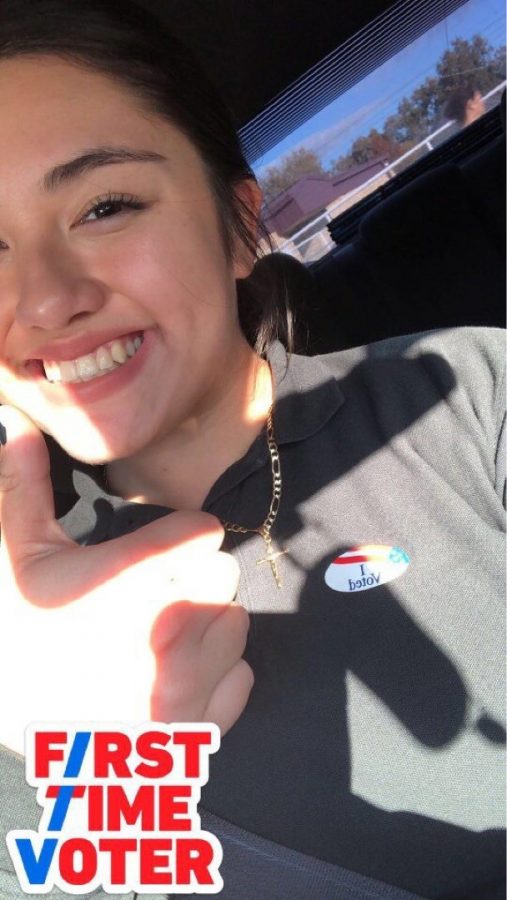2018 Midterms: Out with the old, in with the same
Senior Elia Sanchez after voting for the first time in the 2018 Midterms
December 4, 2018
This past Thanksgiving, a hot topic around the dinner table was politics, and the 2018 midterms only fanned the flames. For Oklahoma state politics though, not much has changed.
In the Governor’s race, Stitt, the Republican candidate, won out over Democratic candidate Drew Edmondson, with a 54.3% majority of the vote. Edmondson pulled 42. 2% and the third party candidates took the remaining 3.4% of the vote.
There were several state questions this year, but they didn’t fare well in the election.
Oklahoma state question 793 would have allowed optometrists and opticians to practice in retail establishments. State question 798 would have changed the Governor and Lieutenant Governor races to the same ballot format as the presidency. State questions 801 would have allowed school boards more control over their funds and allowed them to selectively choose where to place these funds. State question 800 would take the state’s funds from gas and oil and put them into a state fund, The Oklahoma Vision Fund, to help prevent the fluctuation of Oklahoma’s state budget, failed in both the school and state. Statewide question 800 had the largest margin out of the questions that failed, with 57.2% voting no. None of these questions passed, leaving state question 794, which allowed more rights for crime victims, being the only question to pass. Said question had 78% of voters voting yes on their ballots, the highest margin out of any of the questions.
Overall, Oklahoma voted red like it does every year and continued its streak. There were some exceptions however, such as Democratic candidate Kendra Horn, who flipped the 5th district with 50.7% of the votes against her opponent, Steve Russell. Horn will be the first Democratic representative that Oklahoma has sent to Congress since 1975, and the result came as a surprise to many.
Horn’s victory was not the only surprise to occur this election. Voter turnout was also surprisingly high for a mid-term election. In total, roughly 113 million voted in the midterms, 30 million more than the 2014 midterms. In Oklahoma, 42.5% of eligible voters showed up to the polls on Nov. 6 to vote in the midterms.
While this high turnout surprised many, the most shocking factor in this election to many was the high rate of young adult voters. Young adult turnout, defined as ages 18 through 29, was 10% higher than the 2014 midterms, and higher than any midterm in the past quarter century.
While not representative of Oklahoma, several students showed up to vote in the school mock election. Edmondson won the school-wide race with 35 out of 43 votes and no votes for the Libertarian Party’s Chris Powell.
The left-leaning pattern continued, with Democratic candidates winning in the school election while Republican candidates won the state election.
In terms of state questions, the school election mirrored the actual election, with state question 794 being the only question passing.
As younger voters make up the largest electorate of voters, it’s important for them to vote since it “enables them to choose the leaders of tomorrow,” said Polling Place Project. Democracy was founded on the ability to have a voice, especially in government.
“Knowing what is going on around you, in your city, district, and state, is all part of what makes an individual well informed and an integral part of society,” said AP Government teacher Gemma Defee-Cooper. This year she covered the 2018 midterms in class, encouraging those who could vote to go out and vote in the midterms. Defee made it her mission to make educated voters out of her students, because she believes that voting education is important and is essential to learning how to be a good citizen.
“If you don’t vote, you can’t complain about what happens,” Defee said.

